
Zao Onsen: A Serene Hot Spring Haven in Japan
Discover Zao Onsen: Japan's premier hot spring resort, offering therapeutic baths, winter sports, and traditional village charm in the heart of Yamagata Prefecture.
Zao Onsen, nestled in the mountains of Yamagata Prefecture, is one of Japan's most celebrated hot spring resorts. Known for its therapeutic sulfuric waters, this quaint village offers a tranquil escape from the hustle and bustle of urban life. The hot springs' milky white waters, rich in minerals, are said to have healing properties, making it a popular destination for those seeking relaxation and rejuvenation. Beyond its soothing baths, Zao Onsen offers a variety of activities for visitors to enjoy year-round. In winter, the area transforms into a snowy wonderland, drawing skiers and snowboarders to its slopes. The famous 'snow monsters'—trees covered in layers of ice and snow—create a surreal landscape that is a must-see. In the warmer months, the surrounding mountains provide excellent hiking opportunities, with trails offering stunning views of the lush scenery. The village itself exudes a traditional charm with its historic inns, local eateries, and welcoming atmosphere. Visitors can savor regional delicacies such as Yamagata beef and fresh soba noodles, while exploring the quaint streets lined with wooden buildings. Whether you're soaking in the hot springs, hitting the slopes, or simply wandering through the village, Zao Onsen promises a memorable and enriching experience.
Local tips in Zao Onsen
- Visit in winter to witness the unique 'snow monsters' and enjoy skiing or snowboarding.
- Bring a towel and toiletries, as not all hot springs provide them.
- Try the local delicacies like Yamagata beef and fresh soba noodles.
- Wear comfortable shoes for exploring the village and hiking trails.
- Check the weather forecast and dress appropriately, as temperatures can vary greatly.
Zao Onsen: A Serene Hot Spring Haven in Japan
Zao Onsen, nestled in the mountains of Yamagata Prefecture, is one of Japan's most celebrated hot spring resorts. Known for its therapeutic sulfuric waters, this quaint village offers a tranquil escape from the hustle and bustle of urban life. The hot springs' milky white waters, rich in minerals, are said to have healing properties, making it a popular destination for those seeking relaxation and rejuvenation. Beyond its soothing baths, Zao Onsen offers a variety of activities for visitors to enjoy year-round. In winter, the area transforms into a snowy wonderland, drawing skiers and snowboarders to its slopes. The famous 'snow monsters'—trees covered in layers of ice and snow—create a surreal landscape that is a must-see. In the warmer months, the surrounding mountains provide excellent hiking opportunities, with trails offering stunning views of the lush scenery. The village itself exudes a traditional charm with its historic inns, local eateries, and welcoming atmosphere. Visitors can savor regional delicacies such as Yamagata beef and fresh soba noodles, while exploring the quaint streets lined with wooden buildings. Whether you're soaking in the hot springs, hitting the slopes, or simply wandering through the village, Zao Onsen promises a memorable and enriching experience.
When is the best time to go to Zao Onsen?
Iconic landmarks you can’t miss
Kajo Park
Explore Kajo Park, a serene city park in Yamagata, Japan, steeped in history with remnants of Yamagata Castle and beautiful natural landscapes.

Zao Ropeway Zao Sanroku Station
Discover the breathtaking beauty of the Zao mountains with a scenic ride on the Zao Ropeway, where adventure meets stunning nature in Yamagata, Japan.

Okama
Explore Okama, a stunning caldera lake in Miyagi, Japan, surrounded by lush mountains and breathtaking hiking trails for nature lovers.

Zao Onsen Dairotenburo
Experience the serenity of Zao Onsen Dairotenburo, an outdoor bath nestled in the mountains of Yamagata, offering rejuvenating mineral-rich waters and breathtaking views.

Yunohana Chaya Shinzaemon no Yu
Experience ultimate relaxation at Yunohana Chaya Shinzaemon no Yu, a serene outdoor bath in Yamagata's Zaoonsen, surrounded by nature's beauty.
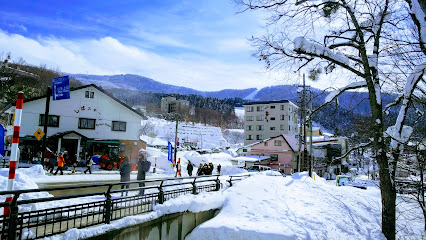
Genshichi Roten no yu Zao Onsen
Experience the tranquility of Genshichi Roten no yu, an exquisite outdoor onsen in Yamagata, surrounded by the serene beauty of nature.
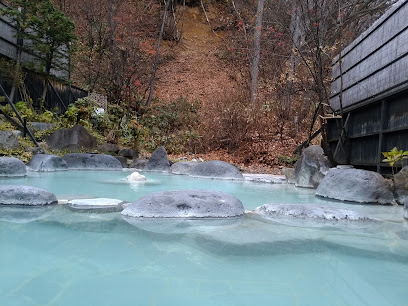
Zao Onsen Ski Resort
Experience the magic of Zao Onsen Ski Resort, where stunning slopes, hot springs, and snow monsters await in Yamagata's winter paradise.

Jizo Sancho Station
Explore the breathtaking vistas of Jizo Sancho Station, a mountain cable car experience offering unforgettable views in Yamagata, Japan.

蔵王の樹氷(山形県)
Experience the breathtaking beauty of Juhyo Forest in Yamagata, where snow-covered trees create a magical winter wonderland perfect for all nature lovers.

Zao Liza World
Discover the enchanting Zao Liza World, a premier ski resort in Yamagata, Japan, offering thrilling slopes, stunning views, and cozy winter escapes.

Sankai Falls viewing platform
Discover the breathtaking views at the Sankai Falls viewing platform, a must-visit observation deck in Miyagi's stunning natural landscape.
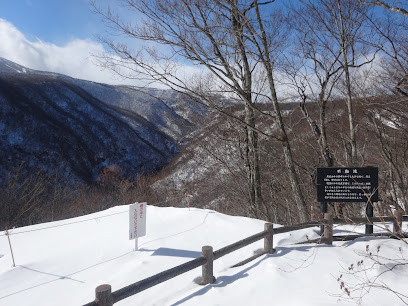
Ōmiya Ryokan
Discover the tranquility of traditional Japanese hospitality at Ōmiya Ryokan in Yamagata's enchanting Zaoonsen region.

Zao Onsen Ski Resort (Central Run)
Experience the thrill of skiing and the relaxation of hot springs at Zao Onsen Ski Resort, a winter paradise in Yamagata, Japan.

Zao Echo Line
Discover the breathtaking views along the Zao Echo Line, a scenic route in Miyagi that showcases nature’s beauty throughout the seasons.

Zao Onsen Shitayu Public Bathhouse
Experience the tranquil embrace of nature at Zao Onsen Shitayu Public Bathhouse, a beautiful onsen retreat in Yamagata, Japan.

Unmissable attractions to see
Zaō Fox Village
Explore Zaō Fox Village in Miyagi, Japan, an enchanting destination where you can meet and interact with friendly foxes in a stunning natural setting.

The Miyagi Museum of Art
Explore the Miyagi Museum of Art in Sendai – a hub for Japanese and international art that inspires creativity and cultural appreciation.

Okama
Experience the awe-inspiring beauty of Okama Crater, a vibrant volcanic lake in Zao National Park, perfect for hiking and nature exploration.

Aobayama Park
Experience the natural beauty and cultural heritage of Aobayama Park in Sendai, Miyagi, a serene escape for nature lovers and tourists alike.

Jizo Sancho Station
Discover breathtaking views and unique frozen landscapes at Jizo Sancho Station, the must-visit mountain cable car in Yamagata, Japan.

Mitakisan Fudoin Temple
Discover the tranquility of Mitakisan Fudoin Temple in Sendai, a stunning Buddhist site blending nature and spirituality in a serene setting.

蔵王の樹氷(山形県)
Experience the mesmerizing beauty of Juhyo, the snow monsters of Zao Onsen, a winter wonderland nestled in the mountains of Yamagata, Japan.

Zao Echo Line
Explore the breathtaking Zao Echo Line, a scenic route in Miyagi offering stunning views and access to nature's wonders and outdoor activities.

Zaomiharashinooka Museum Park
Explore the enchanting beauty and artistic spirit of Zaomiharashinooka Museum Park, a serene retreat in Yamagata, Japan.
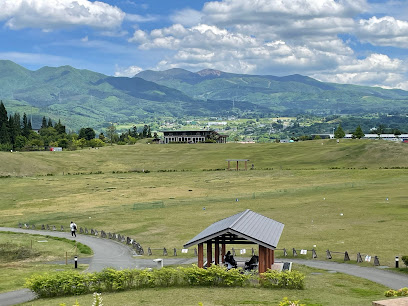
Akiu Traditional Craft Village
Explore the rich craftsmanship of Japan at Akiu Traditional Craft Village, a captivating destination for art and culture enthusiasts.
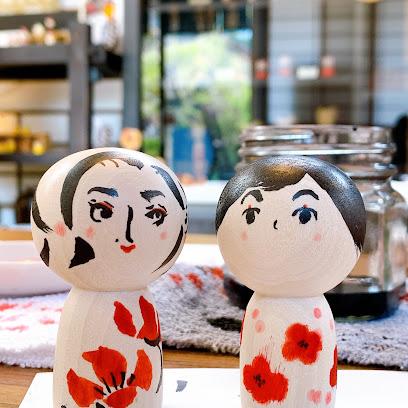
Bust of Date Masamune
Discover the Bust of Date Masamune in Sendai, a stunning tribute to Japan's samurai legacy amidst serene park surroundings.

Dokko Marsh
Explore the tranquil beauty of Dokko Marsh in Yamagata, a natural haven with diverse wildlife and stunning seasonal landscapes perfect for every nature lover.

Zaojizoson
Explore Zaojizoson: a serene tourist attraction and place of worship in Yamagata, Japan, offering stunning views and spiritual tranquility.

蔵王坊平高原
Explore the enchanting trails of Zaosan Nagano, a breathtaking nature preserve perfect for hiking and immersing in Japan's stunning landscapes.

トニー・ザイラー氏顕彰碑
Discover the enchanting Zao Onsen and Toni Sailer Ropeway in Yamagata, where breathtaking views and soothing hot springs await your exploration.

Essential places to dine
蔵王温泉 善七乃湯 Oohira Hotel
Discover the serene beauty of Zao Onsen at Oohira Hotel - a perfect blend of traditional hospitality and rejuvenating hot springs.
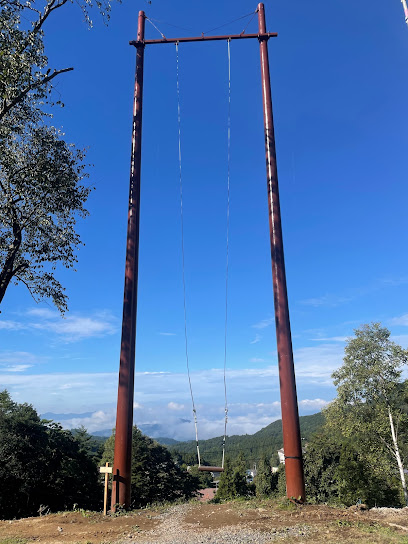
三五郎小屋
Discover authentic Japanese flavors at Sangoro Koya in Yamagata—where tradition meets taste in every dish.

Okumura Sobaya
Savor authentic Japanese ramen at Okumura Sobaya in Zaoonsen – where tradition meets flavor in every delicious bowl.

山口餅屋(やまぐちもちや)
Experience authentic Japanese cuisine and delightful sweets at Yamaguchi Mochiya in scenic Zaoonsen.

蔵王ロープウェイ㈱ レストラン山頂
Experience authentic soba noodles with breathtaking views at Zao Ropeway Restaurant, a must-visit culinary gem in Yamagata's stunning mountain landscape.

Shiba Mama no Omise
Discover Shiba Mama no Omise in Zao Onsen – where authentic vegetarian cuisine meets warm Japanese hospitality amidst stunning natural beauty.

Unite Cafe
Discover the heartwarming flavors of Japan at Unite Cafe in Yamagata's beautiful Zaoonsen region.
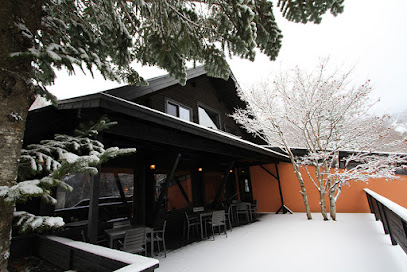
Tomitaya
Experience authentic Japanese flavors at Tomitaya, where freshly made Soba noodles and traditional dishes await you in beautiful Zaoonsen.
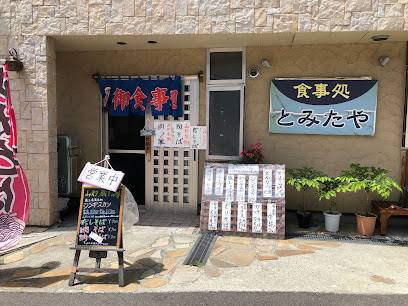
Jupeer
Experience the vibrant blend of dining and sports at Jupeer in Yamagata - where flavor meets fun!

Kasheru
Experience authentic Japanese cuisine at Kasheru in Yamagata's scenic Zaoonsen area - where tradition meets taste.

蔵王 Cafe&bar Chotto
Experience authentic Japanese flavors at 蔵王 Cafe&bar Chotto - where delightful dishes meet serene surroundings.

Zaonoie
Discover authentic Japanese flavors at Zaonoie, Yamagata's premier ramen restaurant nestled in the scenic Zaoonsen area.
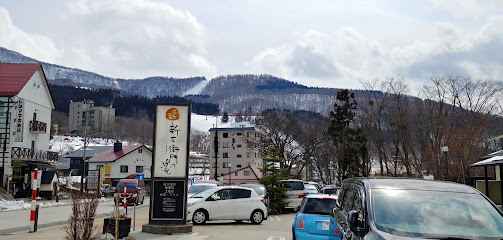
Sushi Kiraku
Discover authentic sushi and traditional Japanese dishes at Sushi Kiraku in Yamagata – a culinary delight not to be missed.

レストラン ベルベル中央
Experience authentic Japanese ramen at Restaurant Beruberu Chuo in Zaoonsen - where tradition meets flavor in every bowl.

Zao Onsen & Ski Lodge Scole
Experience serene relaxation and thrilling adventures at Zao Onsen & Ski Lodge Scole – a perfect getaway in Yamagata's stunning mountains.
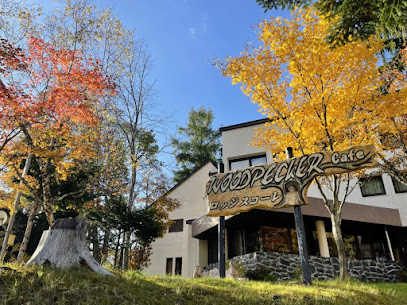
Markets, malls and hidden boutiques
Good Yamagata
Explore Good Yamagata, the ultimate souvenir store in Yamagata offering unique local crafts, delicious treats, and authentic Japanese gifts.

Zao Ropeway Zao Sanroku Station
Explore the majestic Zao Ropeway for breathtaking views and unforgettable mountain experiences in Yamagata, Japan.

Zao Onsen Dairotenburo
Discover tranquility and rejuvenation at Zao Onsen Dairotenburo, an outdoor bath surrounded by breathtaking natural beauty in Yamagata.

Zao Onsen Ski Resort
Experience the magic of winter at Zao Onsen Ski Resort, where exhilarating skiing meets rejuvenating hot springs amidst breathtaking snow landscapes.

Otochaya
Discover Otochaya, a charming cafe in Yamagata offering delightful coffee and homemade treats in a cozy atmosphere.

Zao Onsen Bus Terminal
Discover the beauty of Zao Onsen through its bustling bus terminal, your gateway to winter sports and hot spring relaxation in Yamagata.

山口餅屋(やまぐちもちや)
Experience the essence of Japanese culture with exquisite sweets and traditional meals at Yamaguchi Mochiya in Zaoonsen, Yamagata.

Zao Specialty Museum Notoya
Explore the rich culture of Yamagata at Zao Specialty Museum Notoya, where unique souvenirs and local crafts await every traveler.

Zao Souvenir Center Marushichi
Discover authentic Yamagata treasures at Zao Souvenir Center Marushichi, your gateway to unique regional crafts and local delicacies.

Lawson Yamagata Zaoonsen
Discover convenience at Lawson Yamagata Zaoonsen, your go-to stop for snacks, ATM services, and travel essentials in the heart of Japan's scenic Zaoonsen area.
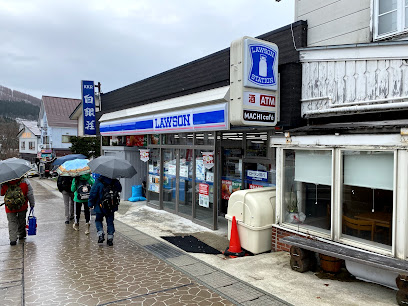
Chamonix
Discover Chamonix, a cozy coffee shop in Yamagata offering artisanal brews, delightful pastries, and a warm, inviting atmosphere for all visitors.

Zao Onsen Yutabiya TAKAYUDO
Explore Zao Onsen Yutabiya TAKAYUDO for unique souvenirs, local crafts, and an enriching cultural experience in Yamagata, Japan.

Zao Sky Cable Uwanodai Station
Discover the breathtaking views and thrilling gondola rides at Zao Sky Cable Uwanodai Station in Yamagata, Japan.
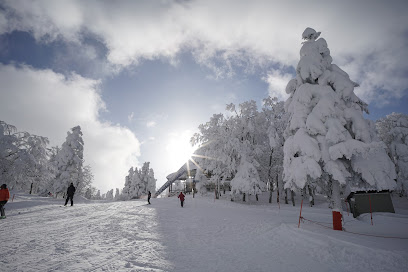
stand MY
Discover Stand MY in Yamagata: where delightful snacks meet exquisite Japanese cuisine in a cozy setting that captures the heart of local dining.

Yoneya Department Store
Explore Yoneya Department Store for authentic Japanese souvenirs, local delicacies, and unique gifts in the beautiful Zaoonsen area of Yamagata.

Essential bars & hidden hideouts
Unite Cafe
Discover the warmth of Unite Cafe, a delightful restaurant and hotel in Zaoonsen, Yamagata, perfect for a relaxing culinary experience.

Tsumami: Yamagata Sake Museum & Bar
Experience the heart of Yamagata's sake culture at Tsumami: Yamagata Sake Museum & Bar, where tradition meets taste.

Zao Brewery
Experience the artistry of craft beer at Zao Brewery, where tradition meets innovation in the heart of Yamagata's scenic landscapes.

Kasheru
Experience authentic Japanese cuisine at Kasheru in Yamagata, where local flavors meet culinary artistry in a warm, inviting atmosphere.

蔵王 Cafe&bar Chotto
Experience the delightful flavors of Japan at Zao Cafe & Bar Chotto, where traditional meets modern in a cozy atmosphere.

Zao Onsen & Ski Lodge Scole
Discover Zao Onsen & Ski Lodge Scole: A perfect blend of adventure and relaxation in Japan's breathtaking landscapes, ideal for families and winter sports lovers.

Jingisukan Lodge
Experience the authentic taste of mutton barbecue in Yamagata's scenic Zaoonsen at Jingisukan Lodge, where tradition meets flavor.

レストラン横倉
Discover the taste of Japan at Restaurant Yokokura, where traditional flavors meet the beauty of Yamagata's Zaoonsen area.

World Cafe PALETTE (ワールドカフェ パレット)
Experience the perfect blend of cafe culture and bar vibes at World Cafe PALETTE in Yamagata, offering delicious food and drinks in a cozy atmosphere.

オーベルジュ樹氷 ( Auberge Juhyo)
Experience the perfect blend of Japanese hospitality and an exquisite whiskey selection at Auberge Juhyo in the serene Zaoonsen area of Yamagata.

50's cocktail's bar Cool (クール)
Discover the charm of 50's Cocktail Bar Cool in Yamagata, where classic cocktails and a nostalgic ambiance create unforgettable memories.

stand MY
Discover Stand MY, Yamagata’s hidden culinary treasure offering exquisite shabu-shabu and delectable desserts in a cozy atmosphere.

KOTOBUKI (Y.N.S.C Ltd)
Discover the warmth of traditional Japanese dining at KOTOBUKI, nestled in the scenic Zaoonsen area of Yamagata, renowned for its beef and sukiyaki.

Rock'n Roll & Pro Wrestling Bar THE HAGGY
Discover the ultimate fusion of rock music and pro wrestling at THE HAGGY, a vibrant bar in Yamagata, Japan, perfect for fans and nightlife lovers.

食堂 雪ぐら
Discover the flavors of Yamagata at Shokudo Yukigura, where authentic Japanese cuisine meets a tranquil dining experience in Zaoonsen.

Local Phrases about Zao Onsen
-
- Helloこんにちは
[Konnichiwa] - Goodbyeさようなら
[Sayōnara] - Yesはい
[Hai] - Noいいえ
[Īe] - Please/You're welcomeどうぞ
[Dōzo] - Thank youありがとう
[Arigatō] - Excuse me/Sorryすみません
[Sumimasen] - How are you?お元気ですか?
[Ogenki desu ka?] - Fine. And you?元気です。あなたは?
[Genki desu. Anata wa?] - Do you speak English?英語を話せますか?
[Eigo o hanasemasu ka?] - I don't understandわかりません
[Wakarimasen]
- Helloこんにちは
-
- I'd like to see the menu, pleaseメニューを見せてください
[Menyū o misete kudasai] - I don't eat meat肉を食べません
[Niku o tabemasen] - Cheers!乾杯!
[Kanpai!] - I would like to pay, pleaseお会計をお願いします
[Okaikei o onegaishimasu]
- I'd like to see the menu, pleaseメニューを見せてください
-
- Help!助けて!
[Tasukete!] - Go away!どけ!
[Doke!] - Call the Police!警察を呼んで!
[Keisatsu o yonde!] - Call a doctor!医者を呼んで!
[Isha o yonde!] - I'm lost迷子です
[Maigo desu] - I'm ill病気です
[Byōki desu]
- Help!助けて!
-
- I'd like to buy...買いたいです...
[Kaitai desu...] - I'm just looking見ているだけです
[Mite iru dake desu] - How much is it?いくらですか?
[Ikura desu ka?] - That's too expensiveそれは高すぎます
[Sore wa takasugimasu] - Can you lower the price?値段を下げてもらえますか?
[Nedan o sagete moraemasu ka?]
- I'd like to buy...買いたいです...
-
- What time is it?今何時ですか?
[Ima nanji desu ka?] - It's one o'clock一時です
[Ichiji desu] - Half past (10)10時半
[Jūji han] - Morning朝
[Asa] - Afternoon昼
[Hiru] - Evening夕方
[Yūgata] - Yesterday昨日
[Kinō] - Today今日
[Kyō] - Tomorrow明日
[Ashita] - 1一
[Ichi] - 2二
[Ni] - 3三
[San] - 4四
[Yon] - 5五
[Go] - 6六
[Roku] - 7七
[Nana] - 8八
[Hachi] - 9九
[Kyū] - 10十
[Jū]
- What time is it?今何時ですか?
-
- Where's a/the...?...はどこですか?
[...wa doko desu ka?] - What's the address?住所は何ですか?
[Jūsho wa nan desu ka?] - Can you show me (on the map)?地図で見せてもらえますか?
[Chizu de misete moraemasu ka?] - When's the next (bus)?次の(バス)はいつですか?
[Tsugi no (basu) wa itsu desu ka?] - A ticket (to ....)(...)へのチケット
[(...) e no chiketto]
- Where's a/the...?...はどこですか?
History of Zao Onsen
-
Zao Onsen's origins trace back over 1,900 years, discovered during the reign of Emperor Keiko. Local legend speaks of an injured warrior who found the healing properties of the sulfuric hot springs, thus marking the beginning of its storied history as a therapeutic haven.
-
During the Edo Period (1603-1868), Zao Onsen gained prominence as a health resort. Samurai and feudal lords frequently visited the hot springs for their reputed medicinal benefits. Inns and bathhouses were established, laying the foundation for the onsen town that thrives today.
-
With the Meiji Restoration in 1868, Japan underwent rapid modernization, and Zao Onsen was no exception. The introduction of railways made the onsen more accessible, bringing in visitors from across the country. Bathing facilities were modernized, and the area saw an influx of tourists seeking both recreation and cure.
-
After World War II, Japan saw a revival of traditional culture and domestic tourism. Zao Onsen experienced a resurgence as people sought solace in its therapeutic waters. The construction of new accommodations and ski resorts transformed Zao into a year-round destination.
-
The 1950s marked the establishment of Zao Onsen Ski Resort, leveraging the region's heavy snowfall and rugged terrain. The resort became famous for the 'snow monsters'—trees covered in layers of snow and ice, attracting winter sports enthusiasts and nature lovers alike.
-
Zao Onsen hosts various cultural festivals that celebrate its rich heritage. The annual Yukigassen Snowball Fight Tournament and the Zao Onsen Fire Festival are notable events that blend traditional practices with modern festivities, drawing crowds from near and far.
-
Many ryokan (traditional Japanese inns) in Zao Onsen have preserved their historical architecture and customs. These establishments offer a glimpse into Japan's past, with tatami-matted rooms, kaiseki dining, and communal baths, providing an immersive cultural experience.
-
In recent years, Zao Onsen has undertaken significant environmental conservation efforts to preserve its natural beauty and hot spring resources. Initiatives include sustainable tourism practices, protection of the surrounding forests, and maintenance of clean and pure onsen waters.
Zao Onsen Essentials
-
Zao Onsen is located in the Yamagata Prefecture in Japan. The most convenient way to reach Zao Onsen is by taking a train to Yamagata Station. From Tokyo, you can take the JR Yamagata Shinkansen 'Tsubasa,' which takes about 2.5 hours. Once you arrive at Yamagata Station, a direct bus service to Zao Onsen is available, taking approximately 40 minutes.
-
Zao Onsen is a small resort town, and many attractions are within walking distance. Local buses are available for traveling to nearby areas and ski resorts. Taxis are also available, but they can be expensive. Renting a car is another option if you plan to explore the wider Yamagata region.
-
The official currency in Japan is the Japanese Yen (JPY). Credit cards are widely accepted in hotels and larger restaurants, but smaller establishments and traditional inns (ryokan) may only accept cash. ATMs that accept international cards are available at convenience stores like 7-Eleven and at Yamagata Station.
-
Zao Onsen is generally a very safe destination for tourists. Japan has a low crime rate, but it is always advisable to take standard precautions. Keep an eye on your belongings, especially in crowded areas. There are no specific high-crime areas targeting tourists in Zao Onsen.
-
In case of emergency, dial 110 for police assistance and 119 for fire or medical emergencies. The local police station and a medical clinic are available in Zao Onsen. It is recommended to have travel insurance that covers medical emergencies. For minor health issues, you can visit local pharmacies.
-
Fashion: Do dress in layers during winter as temperatures can drop significantly. Avoid wearing shoes indoors, especially in traditional inns (ryokan). Religion: Do respect local customs and traditions, especially when visiting temples and shrines. Public Transport: Do be quiet and respectful on public transport. Don't talk loudly or use your phone. Greetings: Do greet people with a slight bow. Handshakes are less common but acceptable. Eating & Drinking: Do try local delicacies and enjoy the hot spring (onsen) culture. Don't tip, as it is not a common practice in Japan.
-
To experience Zao Onsen like a local, start your day with a morning visit to the hot springs. Try the local specialty, Zao cheese, and Soba noodles. Engage with locals in the town's public bathhouses (sento) to learn more about the onsen culture. Don't miss the opportunity to ski or snowboard in the winter and take a cable car ride for stunning views of the snow monsters (Juhyo).
Trending Landmarks in Zao Onsen
-
Kajo Park
-
Zao Ropeway Zao Sanroku Station
-
Okama
-
Zao Onsen Dairotenburo
-
Yunohana Chaya Shinzaemon no Yu
-
Genshichi Roten no yu Zao Onsen
-
Zao Onsen Ski Resort
-
Jizo Sancho Station
-
蔵王の樹氷(山形県)
-
Zao Liza World
-
Sankai Falls viewing platform
-
Ōmiya Ryokan
-
Zao Onsen Ski Resort (Central Run)
-
Zao Echo Line
-
Zao Onsen Shitayu Public Bathhouse
Nearby Cities to Zao Onsen
-
Things To Do in Kanazawa
-
Things To Do in Nagoya
-
Things To Do in Kyoto
-
Things To Do in Sapporo
-
Things To Do in Nara
-
Things To Do in Osaka
-
Things To Do in Hiroshima
-
Things To Do in Pohang
-
Things To Do in Gyeongju
-
Things To Do in Fukuoka
-
Things To Do in Ulsan
-
Things To Do in Andong
-
Things To Do in Busan
-
Things To Do in Daegu
-
Things To Do in Chuncheon








